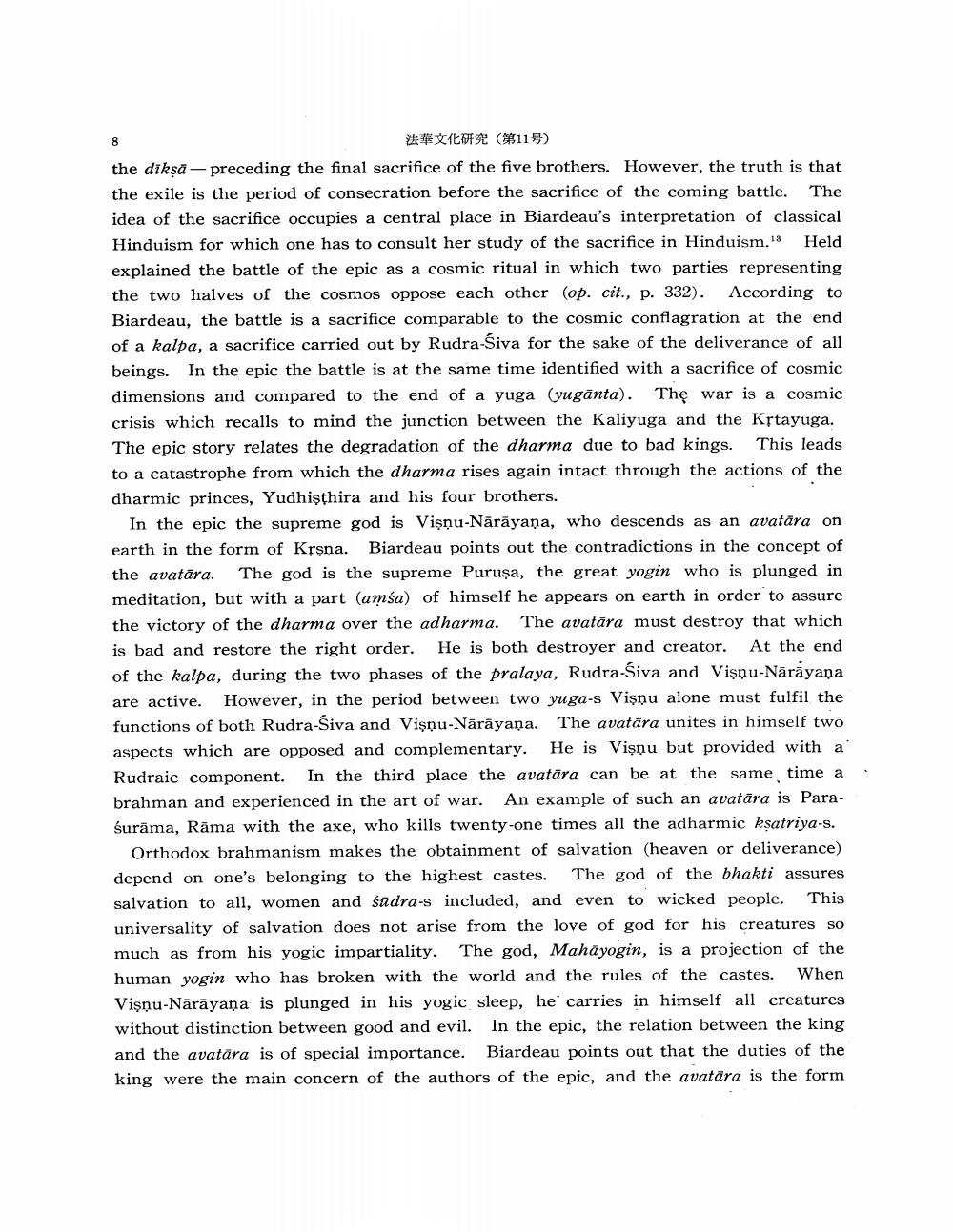________________
法華文化研究 (第11号)
the dikṣā
preceding the final sacrifice of the five brothers. However, the truth is that
the exile is the period of consecration before the sacrifice of the coming battle. The idea of the sacrifice occupies a central place in Biardeau's interpretation of classical Hinduism for which one has to consult her study of the sacrifice in Hinduism.18 Held explained the battle of the epic as a cosmic ritual in which two parties representing the two halves of the cosmos oppose each other (op. cit., p. 332). According to Biardeau, the battle is a sacrifice comparable to the cosmic conflagration at the end of a kalpa, a sacrifice carried out by Rudra-Siva for the sake of the deliverance of all beings. In the epic the battle is at the same time identified with a sacrifice of cosmic dimensions and compared to the end of a yuga (yuganta). The war is a cosmic crisis which recalls to mind the junction between the Kaliyuga and the Krtayuga. The epic story relates the degradation of the dharma due to bad kings. This leads to a catastrophe from which the dharma rises again intact through the actions of the dharmic princes, Yudhisthira and his four brothers.
In the epic the supreme god is Vişņu-Nārāyaṇa, who descends as an avatara on earth in the form of Krsna. Biardeau points out the contradictions in the concept of the avatara. The god is the supreme Puruşa, the great yogin who is plunged in meditation, but with a part (amsa) of himself he appears on earth in order to assure the victory of the dharma over the adharma. The avatara must destroy that which is bad and restore the right order. He is both destroyer and creator. At the end of the kalpa, during the two phases of the pralaya, Rudra-Šiva and Visnu-Narayana are active. However, in the period between two yuga-s Vişņu alone must fulfil the functions of both Rudra-Śiva and Vişņu-Nārāyaṇa. The avatara unites in himself two aspects which are opposed and complementary. He is Visņu but provided with a Rudraic component. In the third place the avatara can be at the same time a brahman and experienced in the art of war. An example of such an avatara is Paraśurāma, Rāma with the axe, who kills twenty-one times all the adharmic kṣatriya-s.
Orthodox brahmanism makes the obtainment of salvation (heaven or deliverance) depend on one's belonging to the highest castes. The god of the bhakti assures salvation to all, women and sudra-s included, and even to wicked people. This universality of salvation does not arise from the love of god for his creatures so much as from his yogic impartiality. The god, Mahayogin, is a projection of the human yogin who has broken with the world and the rules of the castes. When Vişņu-Nārāyana is plunged in his yogic sleep, he carries in himself all creatures without distinction between good and evil. In the epic, the relation between the king and the avatara is of special importance. Biardeau points out that the duties of the king were the main concern of the authors of the epic, and the avatara is the form




